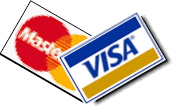What's New - July 2001
[Home]
|
July 31,2001: Posted a revision of the ReactionTimes program today. It includes two sample statistics programs - a DensityPlot program uses TChart to plot the distribution of response times. Also a ReactionStats program which uses Student's t-test to give insight about differences between average reaction times for 2 selected sets of data. No write-up yet, but if you know statistics, or want to, have a look. I've tried to avoid the statisticians lingo in order to make results understandable to us mere mortals. A few other changes were made to ReactionTimes to optionally create detail files and to clean up one or two data formatting errors. July 28, 2001: Test your reflexes with this Reaction Times program. It's a good candidate for a Science Fair project if you happen to have contact with anyone involved. Perhaps an opportunity to introduce some young person to the fun of programming at the same time. Subjects use mouse clicks or key presses to respond to targets flashed on the screen. The experiment designer defines the test parameters. There are lots of possible variables to test - one eye vs two, which hand, target size/color/location, age of subject, etc. (If you try toe response time, expect some "stop cheating!" messages for clicking too soon.) Response time data is saved in a file for further analysis. I'm working hard on an "Intro. to Statistics" page that will help analyze Reaction Timer data files. July 22, 2001:
July 17, 2001:
Scrolling LEDs - a scrolling clock project that got out of hand. You control message text, size, speed, color, etc. Plus a dozen or so special downloaded LED fonts (for which I take little credit). Well, I will take credit for fixing some font format problems. Here's a File Fix-up program page in the Delphi Techniques section. It describes the "extra carriage return" problem with a guess or two about the cause and how to use the TFileStream component in a program to fix it. July 14:2001: The new computer is up and running. For most of the stuff I do, I can't tell the difference between the new 800mhz Celeron and the old 300mzh AMD K5. But I do have two 30gb hard drives mirroring each other now which was the main objective of the upgrade. And the benchmarks say I'm 3 times faster so the programs should really fly out of here now. Today I posted another simple Pi calculation program - demonstrating the relationship between the probability that pairs of integers are relatively prime and Pi. We use Mr. Euclid's GCD (Greatest Common Denominator) Algorithm to test "relative primeness", so I also posted a Math Topic on that remarkable result (Euclid and the GCD). I call it "remarkable" because he published his work a few centuries before algebra had been formalized!
|

 It's hard to find programs that are both simple and interesting, but
here's a Beginner's level
It's hard to find programs that are both simple and interesting, but
here's a Beginner's level 